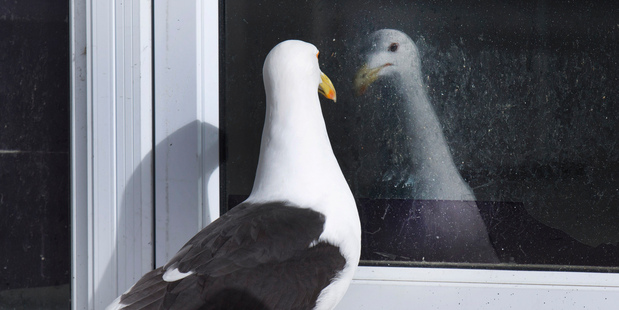By Carolyn Lucas-Zenk
29th September 2014
West Hawaii Today
 An hour before the sun rises each day, the very raucous and loud calls of nine rare alala, or Hawaiian crows, can be heard by the Keauhou Bird Conservation Center staff. Inside their large open-air aviary, these juveniles seemed to engage in a vocal sparring of sorts in a manner that’s reminiscent of monkeys for research associate Amy Kuhar.
An hour before the sun rises each day, the very raucous and loud calls of nine rare alala, or Hawaiian crows, can be heard by the Keauhou Bird Conservation Center staff. Inside their large open-air aviary, these juveniles seemed to engage in a vocal sparring of sorts in a manner that’s reminiscent of monkeys for research associate Amy Kuhar.
“There’s a big sound missing from the forest,” she said of the alala, which were once widespread on Hawaii Island and now survive only in captivity at this Volcano center and the Maui Bird Conservation Center in Olinda.
On a sunny Tuesday morning, Kuhar enters their stress-free environment to deliver enrichment, which this time is food and habitat items wrapped in ginger leaves. Perched on various branches, the young birds make their musical vocalizations while curiously watching their silent visitor’s every move as she throws and hides the packets. When she leaves, some of the birds begin to explore and manipulate the packets to get the reward hidden inside.













